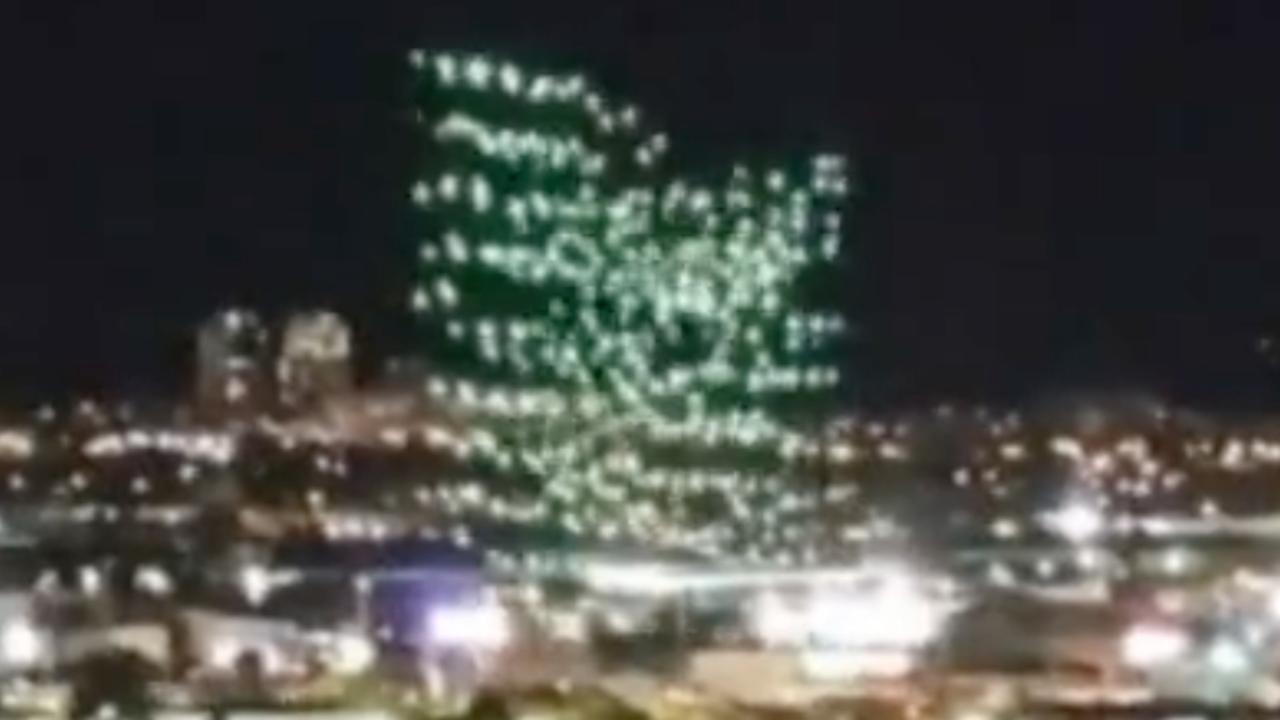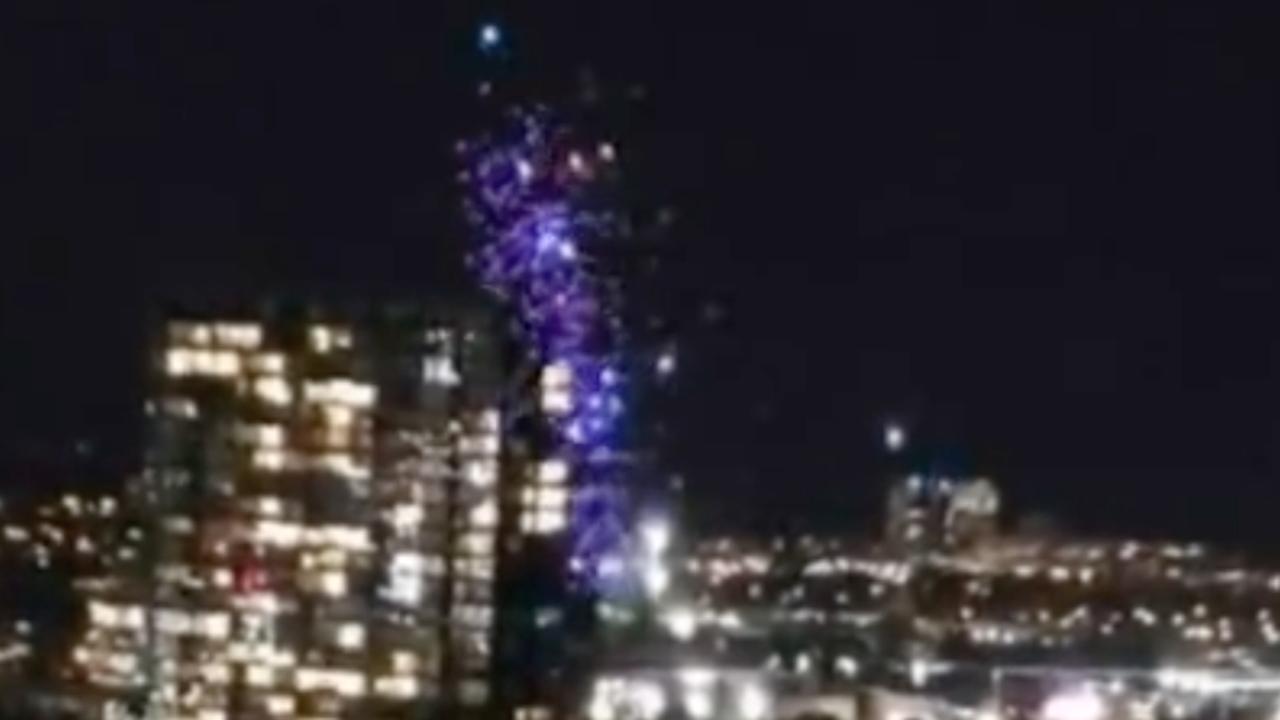Orlando drone show malfunction: A spectacular aerial display turned unexpectedly chaotic when a technical failure disrupted a planned drone show over Orlando. This incident serves as a compelling case study, highlighting the complexities and potential risks involved in large-scale drone operations. We delve into the specifics of the malfunction, examining the technical aspects, public reaction, and the crucial lessons learned for future drone shows.
The incident prompts a critical examination of safety protocols, technological reliability, and the evolving regulatory landscape surrounding drone technology.
The following sections detail the event timeline, the nature of the malfunction, the public and official responses, and steps that could prevent similar occurrences. We will explore potential causes, examine eyewitness accounts, and analyze the impact on both the organizers and the viewing public. Ultimately, this analysis aims to provide a comprehensive understanding of this incident and contribute to safer, more reliable drone shows in the future.
The Orlando Drone Show Malfunction: A Detailed Analysis

On a warm evening in [Insert Date], a highly anticipated drone show over [Insert Location, e.g., Lake Eola Park] in Orlando experienced a significant malfunction. Organized by [Insert Company Name], the event promised a spectacular display of hundreds of synchronized drones, but instead delivered a chaotic and concerning spectacle. This analysis delves into the event details, the nature of the malfunction, its impact, and the lessons learned to prevent similar incidents in the future.
Event Details: The Orlando Drone Show Malfunction
The drone show, scheduled for [Insert Time], was expected to feature approximately [Insert Number] drones from [Insert Drone Model Name]. These drones, known for their [Insert Key Features, e.g., bright LED lights and precise flight capabilities], were programmed to execute a complex choreography involving [Insert Description of Planned Sequence, e.g., forming various shapes and patterns in the sky, accompanied by music].
However, at approximately [Insert Time of Malfunction], a malfunction disrupted the planned sequence, leading to a chaotic display of erratically moving drones.
A timeline of events includes: [Insert Time]
-Show begins as planned; [Insert Time]
-Initial signs of malfunction detected (e.g., drones deviating from their programmed path); [Insert Time]
– Major malfunction occurs, with drones exhibiting erratic flight patterns; [Insert Time]
-Show organizers halt the display; [Insert Time]
-Emergency personnel arrive on the scene.
Nature of the Malfunction: Technical Aspects
The malfunction appeared to stem from a combination of factors. Initial reports suggest a possible [Insert Suspected Cause, e.g., software glitch in the central control system], potentially exacerbated by [Insert Contributing Factor, e.g., unexpected wind gusts]. This led to a loss of synchronization among the drones, resulting in uncontrolled movements and deviations from the planned flight path. Similar incidents in other drone shows have been attributed to similar causes, including instances of GPS signal interference and communication failures between the control system and the drones.
One notable example is the [Insert Example of Similar Incident] incident in [Location], where a [Describe nature of the malfunction] caused a similar disruption.
The recent Orlando drone show malfunction, causing a temporary disruption, highlights the complexities of large-scale technological displays. It made me think of the seemingly flawless operation of the NORAD Santa Tracker, and you can actually find the norad santa tracker phone number if you’re curious about its logistics. The contrast between the two events underscores the importance of robust planning and contingency measures for any public spectacle, especially those involving drones.
A hypothetical scenario could involve a software error in the flight control algorithm causing a cascading effect, impacting the position and movement of multiple drones simultaneously. The strong winds may have further compounded the issue, making it difficult for the drones to maintain their programmed positions.
Impact and Response: Public Perception and Aftermath
Eyewitness accounts paint a picture of initial excitement turning to confusion and concern. The sudden chaotic movement of the drones, accompanied by the sounds of their motors and the audible distress of some spectators, created a tense atmosphere.
| Witness Name | Description of Event | Emotional Response |
|---|---|---|
| [Witness 1 Name] | [Witness 1 Description] | [Witness 1 Emotional Response] |
| [Witness 2 Name] | [Witness 2 Description] | [Witness 2 Emotional Response] |
| [Witness 3 Name] | [Witness 3 Description] | [Witness 3 Emotional Response] |
Show organizers immediately halted the display and initiated safety protocols. Emergency services were contacted, although thankfully, no injuries or property damage were reported. A full investigation was launched to determine the root cause of the malfunction and to prevent future occurrences.
Recent reports detail a significant incident involving an Orlando drone show, causing considerable disruption to the planned spectacle. The specifics of the malfunction, including its cause and the extent of the damage, are detailed in this comprehensive report: orlando drone show malfunction. Fortunately, no injuries were reported, but the event highlights the inherent technological challenges involved in large-scale drone displays.
Investigations into the Orlando drone show malfunction are currently underway.
Preventive Measures and Future Implications: Lessons Learned

Several steps could have potentially mitigated the malfunction. These include implementing more robust redundancy in the drone control system, incorporating weather monitoring systems to adjust show schedules or drone configurations based on wind conditions, and conducting more rigorous pre-show testing of the software and hardware.
- Implement redundant control systems to prevent single points of failure.
- Integrate advanced weather monitoring and predictive systems into show planning.
- Conduct more thorough pre-flight checks and simulations to identify potential software or hardware issues.
- Develop more stringent safety protocols, including emergency shutdown procedures.
- Enhance communication systems between drones and the control center.
Visual Representation of the Malfunction: Descriptive Account
The visual impact of the malfunction was striking. Instead of the planned synchronized patterns, the drones exhibited erratic movements, forming chaotic clusters and unpredictable shapes in the night sky. Their lights, usually a coordinated spectacle of color and design, flickered erratically, creating a disorienting and somewhat unsettling display. The sounds accompanying this visual chaos were equally jarring, a mix of the drones’ motors straining under stress and the confused murmurs of the audience.
The malfunction unfolded over approximately [Duration] minutes. It began with subtle deviations from the programmed path, gradually escalating into complete disarray. The intensity of the erratic movements increased, with drones seemingly colliding or narrowly avoiding each other, before the show organizers finally managed to halt the display.
The Orlando drone show malfunction serves as a stark reminder of the inherent risks associated with complex technological displays. While the immediate impact might have been contained, the long-term consequences, including reputational damage and the need for improved safety protocols, are significant. A thorough investigation and the implementation of robust preventative measures are crucial to ensuring the future safety and success of similar events.
The lessons learned from this incident should inform best practices within the industry, paving the way for more reliable and secure drone shows worldwide. This detailed analysis underscores the importance of rigorous planning, comprehensive testing, and proactive risk management in this rapidly evolving field.
Essential Questionnaire
What type of drones were involved in the Orlando drone show?
Reports of an Orlando drone show malfunction surfaced recently, raising concerns about the technical aspects of these increasingly popular displays. To understand the context, it’s helpful to examine the overall production of an orlando drone show , which involves complex choreography and precise synchronization. Analyzing these factors can help pinpoint potential causes for the malfunction and inform future safety protocols for similar events.
This information will be provided in the detailed report, specifying the make, model, and capabilities of the drones used.
Were there any injuries reported as a result of the malfunction?
The full extent of injuries, if any, will be detailed in the report, including the nature and severity of any reported incidents.
What was the estimated cost of the damage caused by the malfunction?
A comprehensive assessment of the financial impact of the malfunction, including property damage and potential economic losses, will be included in the final report.
What regulatory bodies are investigating the incident?
Details on which regulatory bodies are involved in the investigation and their respective roles will be available in the complete report.

